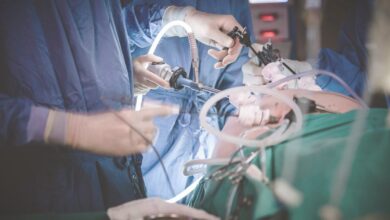5 Things Clinicians Gain from Remote Diagnostic Capabilities

The earliest implementation of primitive telehealth dates to the invention of the telephone. What would eventually become modern telehealth was developed by NASA from the late 1950s through the 60s and 70s. Modern telehealth is more advanced still, with built-in diagnostic capabilities that are gradually making the office visit obsolete.
CSI Health is a San Antonio, TX company that designs and builds custom telehealth solutions. Their medical kiosks, portable telemedicine kits, and full clinics all feature diagnostic capabilities. Installed diagnostic tools run the gamut from blood pressure cuffs to digital stethoscopes and ultrasound to sonogram.
CSI Health and its competitors sell systems to independent clinicians and healthcare companies alike. It is not hard to figure out why healthcare companies would be interested in the technology, but what do individual clinicians stand to gain from remote diagnostic capabilities?
1. Increased Patient Engagement
Now that telemedicine and on-demand healthcare have taken root, a certain segment of the population prefers to receive healthcare services by way of technology. This suggests that clinicians can further engage with their patients by giving them as many telemedicine options as possible. Increased engagement leads to higher patient loads and more revenue.
2. Increased Efficiency
As the coronavirus crisis forced telemedicine to the forefront, clinicians of all stripes discovered how much more efficiently they could work in a telehealth setting. Not having to jump from exam room to exam room eliminates time walking around the office. Eliminating the waiting room also eliminates distractions for front office staff. Truth be told, visiting with patients remotely can make just about any clinician more efficient.
3. The Ability to See More Patients
Because telemedicine is more efficient in terms of daily operations, it takes clinicians less time to perform the same tasks. The result is the ability to see more patients in a given day without compromising quality of care. Clinicians not wishing to increase daily patient load can take the time they save and devote it to those patients who need a little bit extra.
This particular point sits very well with patients normally frustrated by short visits. Patients who tend to feel their clinicians do not give them enough time in the office may sing a different tune after a few telehealth visits.
4. Lower Overhead Costs
The most expensive way to run a private practice is to maintain a large office with a full staff and as many exam rooms as possible. The model is expensive because it is heavy on overhead. Telehealth with built-in diagnostic capabilities reduces the need for so much space. Office sizes can shrink, as can staff requirements. The result is lower overhead.
5. Access to Rural Patients
This last point is one of the least talked about aspects of telemedicine with remote diagnostic capabilities: the ability to access rural patients who normally have trouble obtaining even routine healthcare services. For some clinicians, this is the biggest selling point of all. They welcome the opportunity to treat rural patients without having to set up entirely new offices complete with separate staff and equipment.
All of what has been discussed in this post is understood from the perspective of employing diagnostic-capable telehealth solutions instead of just a video call. Practicing telehealth with videoconferencing is better than nothing at all but investing in telehealth solutions with built-in diagnostic capabilities is even better.
Remote diagnostics are the future of telehealth. The more sophisticated remote diagnostic technologies become, the less necessary it will be to maintain traditional medical offices. It may be that those offices will someday cease to exist.





